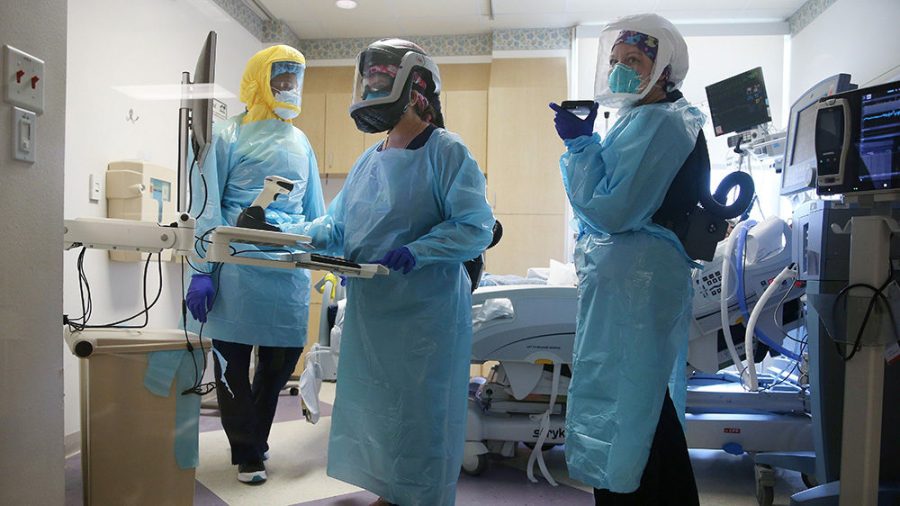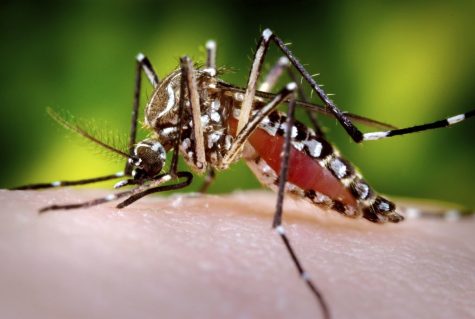Paging All Healthcare Workers: Hospital and Care Organizations Growing Labor Shortages
November 17, 2021
Beyond the nursing sector, healthcare staffing shortages have been an issue long before the COVID-19 pandemic made waves throughout healthcare systems. Studies argue if this notion is a fact or fiction.
Healthcare employment has plummeted with over 500,000 jobs lost since the COVID-19 pandemic hit in March 2020. However, employee shortages in hospitals and care facilities have been an issue long before the pandemic started.
Many health systems argue that the ongoing nurse shortage is becoming a national crisis. Hospitals and care facilities across the nation are facing a number of issues including the overwhelming increase of patients, faulty healthcare measures, and employee burnout.
Almost 50% of California Nurses aged 30-50 have recently moved from full-time to part-time roles, impacting the incentive and need for many nurses in this environment.
“Many clinical settings including hospitals are reducing the number of nursing students they are willing to have trained in their facilities because they are short-staffed, or they have new or traveling nurses working for them and they are reluctant to add our clinical faculty and student groups into the mix. It is becoming a very challenging situation,” stated Dr. Monika Eckfield, Ph.D., RN an associate professor, and Nursing Department Chair at California State University, East Bay.
It’s important to note that these shortages are not only from nurses. Physicians and other healthcare workers are facing shortages at unprecedented rates. A study found physician shortages by upwards of 140,000 throughout the country by 2030. It predicts that the Western states will face the greatest shortage with 69 physician jobs per 100,000 people due to the high demand for physicians. The reality of this issue is that the demand outweighs the supply of physicians available.
According to the Mercer Report, California and New York are expected to lose over 500,000 members from their workforce by 2026. Since many nurses will be leaving the field for retirement and other reasons, it’s expected that 1.1 million nurses will be needed by 2026 to combat the loss of outgoing nurses in the healthcare industry.
Mercer reported that mental health workers will also see an increase in shortages. Despite the pandemic, it highlighted the importance of mental health. The current demand is expected to decrease by 10%; over 400,000 professionals are set to leave the workforce by 2026.
With the aging population increasing and more people being insured for healthcare through the Affordable Care Act (ACA), healthcare demands are growing at record paces. Millions of Americans now have access to care. However, as the demand grows and the workforce decreases, nursing assistants, home health aides, nurse practitioners, and medical lab technicians positions are expected to decrease by 2025.
Contrary to the studies conducted, National Nurses United argues that there is a strong pipeline of sufficient registered nurses that meet the needs of the country’s patients, per reports.
“It’s clear that hospitals have no excuse for a staffing crisis they have created. The solution we can start implementing today is for hospitals to immediately staff up every unit, every shift, and create a safe, sustainable work environment where nurses can feel confident about their ability to provide the best nursing care possible for their patients” discusses National Nurses United.
Despite the onset of healthcare shortages, COVID-19 caseloads are at an all-time high. Hospitals and healthcare systems are paying $24B more per year for qualified critical labor than they did pre-pandemic, according to a recent analysis by PINC AI. The American Nurse Association reported that the Delta variant of COVID-19 further incited workforce shortages.
“COVID-19 has been the breaking point. This additional stress on the healthcare system shifted how we gauge what’s working and what is not. It has highlighted how our system, focused more on treating illness than preventing them, is ready for an overhaul,” continued Eckfield.
These challenges create barriers to patients in need of care. Surgeries are being delayed because physicians and other hospital staff are not available to perform the procedure. The growing demand for treatment heavily outweighs the current staff that is present to perform those duties. Hospitals and care facilities are suspending much-needed operations because of this.
Shortages have been exacerbated due to President Biden’s vaccine mandate. Healthcare workers for both Medicare and Medicaid, including hospitals and care facilities are required to be vaccinated against COVID-19. Although many hospitals have lost employees because of this, employee burnout remains the most notable reason for labor shortages, according to Healthcare Finance.
Health organizations should anticipate these shortages and prepare their healthcare systems for alternative care models. The implementation of telehealth and telemedicine has changed the game for patients and care providers. On-hand care is still a primary goal for many healthcare systems to ensure the patient care experience is a priority.
“Hopefully as a society people want to join the workforce. There are solutions for these labor shortages. We have to change policies and advocate for better housing, education, child care, and other social determinants to promote health and real long-term benefits. 10 or 20 years from now, we’ll have the type of sustainable healthcare that we need to continue moving forward,” concluded Eckfield.







![Photo of fentanyl from the U.S. Drug Enforcement Administration (Photo courtesy DEA via Bay City News) [for education purposes only]](https://thepioneeronline.com/wp-content/uploads/2024/03/IMG_4583-600x443.jpg)









